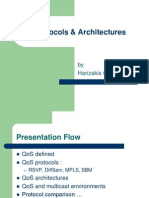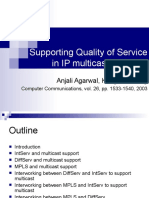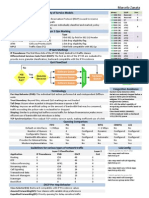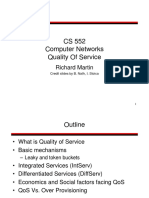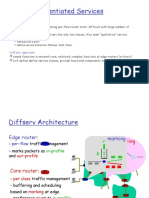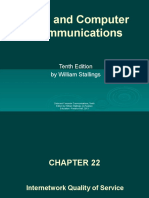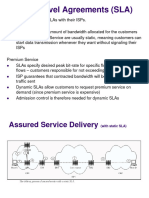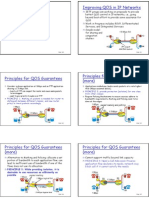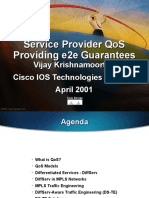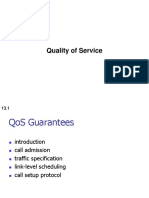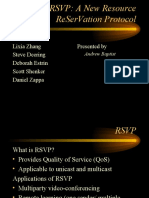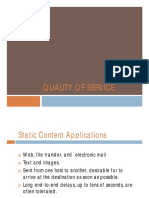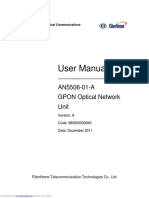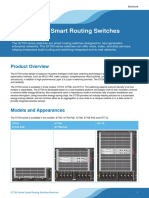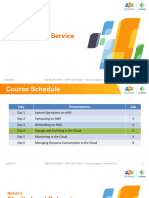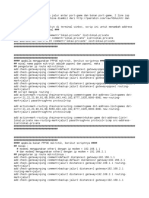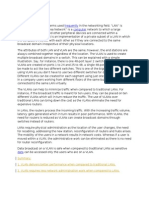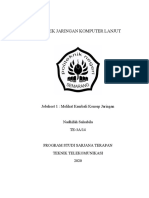0% found this document useful (0 votes)
75 views30 pagesQos Protocols & Architectures: by Harizakis Costas
The document discusses quality of service (QoS) protocols and architectures for IP-based networks. It defines QoS and common metrics like delay, jitter, throughput and packet loss. Major QoS protocols described are RSVP for resource reservation, DiffServ for prioritization using traffic classes, MPLS for establishing fixed bandwidth routes, and SBM for enabling QoS at the data link layer. The document provides high-level overviews of how each protocol classifies and marks traffic to provide QoS.
Uploaded by
dexterlab13Copyright
© © All Rights Reserved
We take content rights seriously. If you suspect this is your content, claim it here.
Available Formats
Download as PPT, PDF, TXT or read online on Scribd
0% found this document useful (0 votes)
75 views30 pagesQos Protocols & Architectures: by Harizakis Costas
The document discusses quality of service (QoS) protocols and architectures for IP-based networks. It defines QoS and common metrics like delay, jitter, throughput and packet loss. Major QoS protocols described are RSVP for resource reservation, DiffServ for prioritization using traffic classes, MPLS for establishing fixed bandwidth routes, and SBM for enabling QoS at the data link layer. The document provides high-level overviews of how each protocol classifies and marks traffic to provide QoS.
Uploaded by
dexterlab13Copyright
© © All Rights Reserved
We take content rights seriously. If you suspect this is your content, claim it here.
Available Formats
Download as PPT, PDF, TXT or read online on Scribd
/ 30
